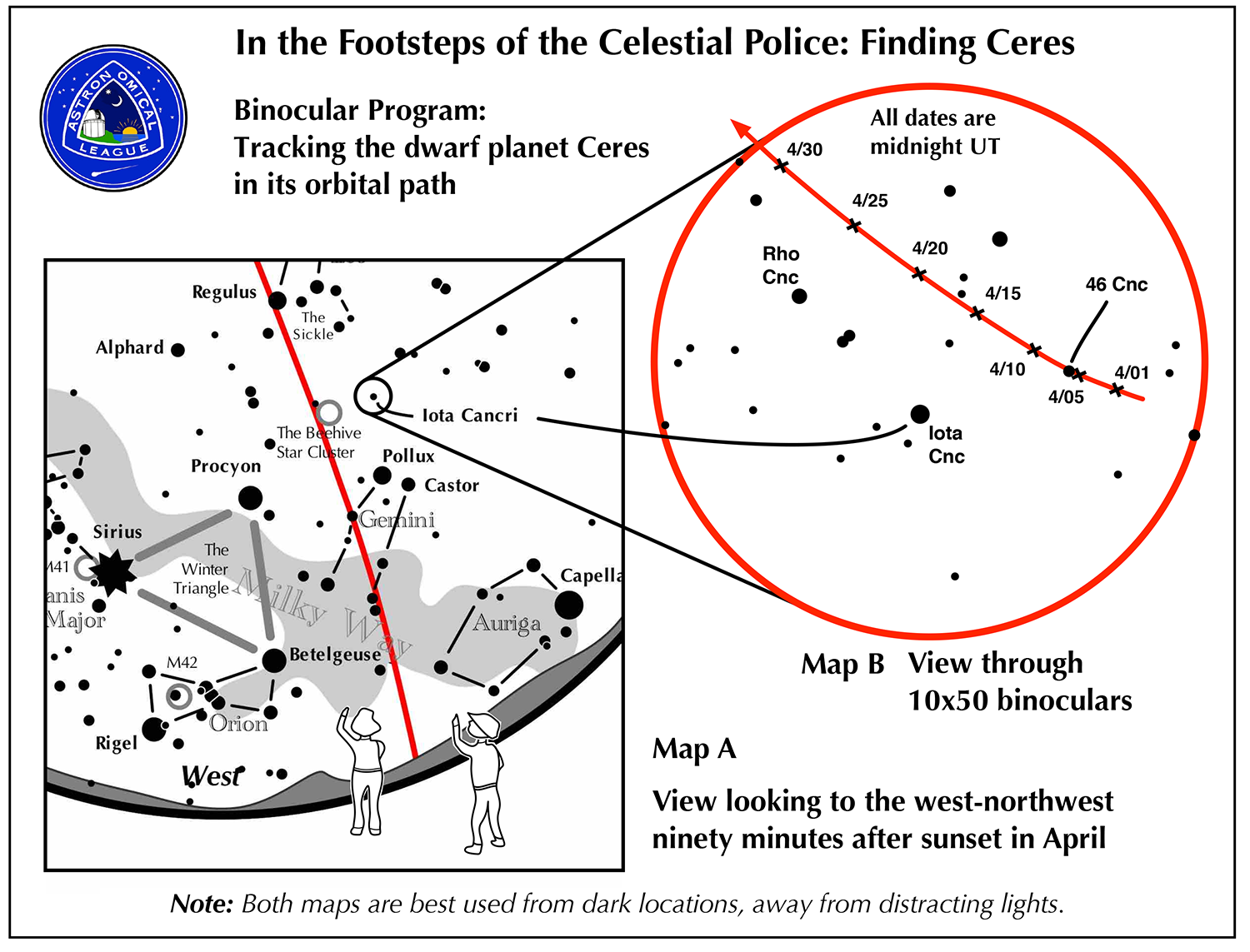A binocular activity
At the beginning of April, Ceres will appear starlike on the right side of the field of view. Unfortunately, the brightening moonlight interferes until April 4. After that, the moon rises well after evening twilight ends, allowing time for suitable observations. When Ceres moves above Rho Cancri near the end of the month, bright moonlight returns hampering meaningful observations.
Eighteenth century astronomers felt there was something wrong with our solar system. They suspected that a missing planet existed, moving between the orbits of Mars and Jupiter at 2.8 Astronomical Units from the sun. A curious mathematical relationship, eventually called the Bode–Titus Law, had been formulated which seemed to satisfactorily describe the relative spacing of the planetary orbits. A planet was predicted orbiting 2.8 AU from the sun, but nothing was seen.
Planetary Orbit Spacing Table
Planet B–T Actual
value value
Mercury 0.40 AU 0.39 AU
Venus 0.70 0.72
Earth 1.00 1.00
Mars 1.60 1.52
? 2.80 ----
Jupiter 5.20 5.20
Saturn 10.0 9.54
Uranus 19.6 19.19
European astronomers felt strongly enough about the reality of this unknown planet that they formed a team, nicknamed the “Celestial Police,” to search for it. However, a new body was spotted shortly before they could begin their organized search. On the night of January 1, 1801, team member Guiseppe Piazzi spied a starlike object that had moved slightly in the heavens between the Hyades and Pleiades star clusters. It was soon realized that it was a small body – much smaller than any known planet – located near the same distance from the sun as was the “missing” planet predicted by the Bode-Titus law. It was eventually called Ceres.
Three other small bodies were discovered over the next few years, all lying about the same distance from the sun as Ceres. They were named Pallas, Juno, and Vesta. Over the years, many thousands of these small planetoids were found. They became known as asteroids. Within the past twenty years, Ceres has been reclassified as a “dwarf planet.” The rest are still referred to as asteroids.
Binocular Program: Tracking the dwarf planet Ceres in its orbital path
How to find Ceres as viewed from a dark location, away from distracting lights:
- Look to the west-northwest ninety minutes after sunset and locate the bright stars Pollux, Procyon, and Regulus. Aim binoculars at the Beehive Star Cluster in the center of that trio of stars. See Map A.
- Form a right triangle with Pollux and the Beehive. The upper right vertex is Iota Cancri, a dim star visible to the unaided eye.
- Put Iota near the center of the binocular field. To its right and half way to field’s edge lies a fainter star, 46 Cancri. See Map B.
- On April 5, the slightly dimmer Ceres moves next to 46 Cnc, slightly north of it. Use the accompanying map to establish their locations.
- Follow Ceres nightly as it moves slowly to the upper left during April. (It will always be dimmer than 46 Cancri and Rho Cancri.)









